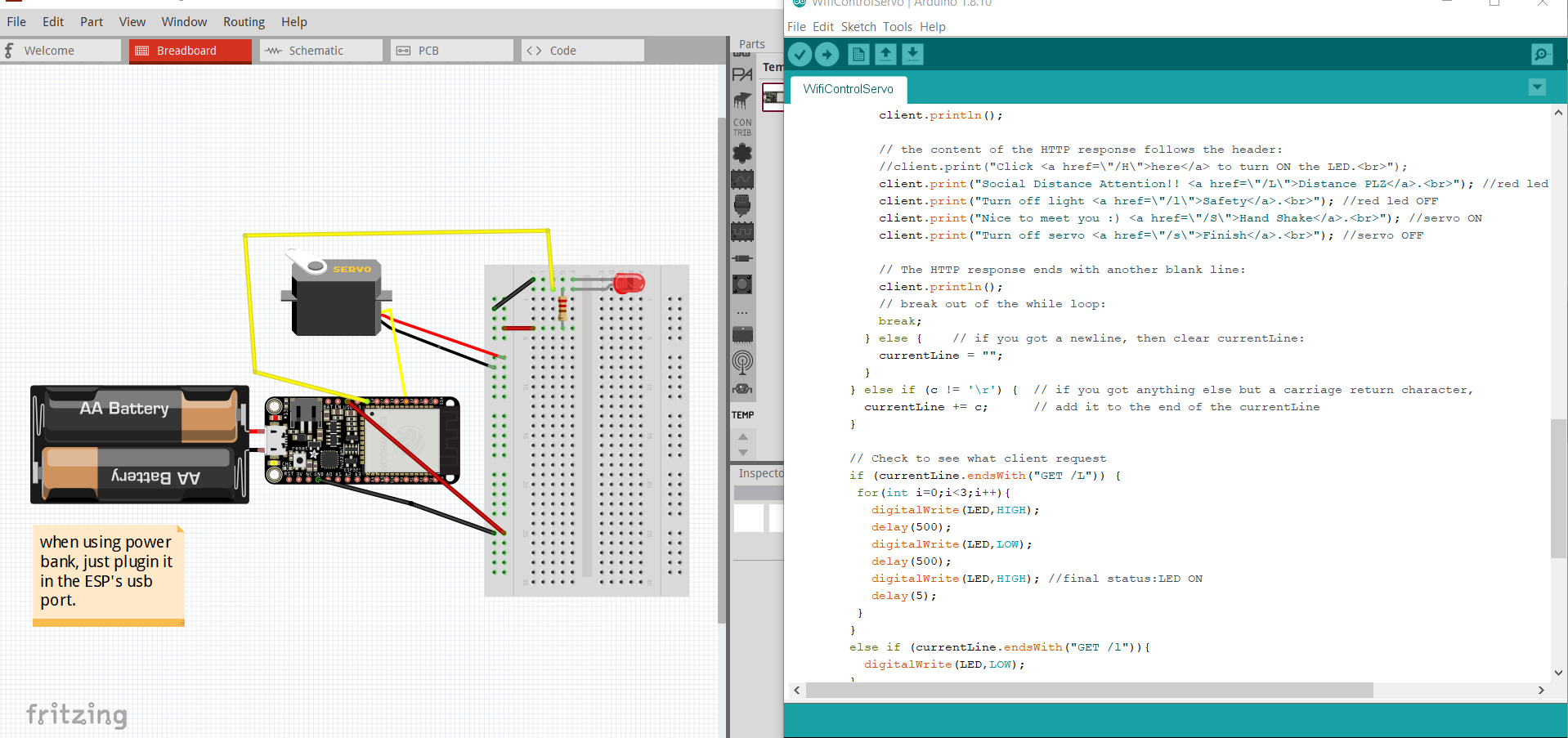Vague Edge
This project is about a collaborative interactive music installation for social ice-breaking and fun.
produced by: Yanyi Lu
Introduction
This installation explores the new definition of collaboration in music. It is not from macro perspective like instrumental ensemble but the micro perspective, called synthetic of note. This system extends the meaning of collaboration in music and has positive potential in imperceptible social building.
Feature keywords: music, multi-player, social interaction
Art style keywords: semi-transparency, clean, edge, break through
Ideation
Considering feasibility, creativity and compatibility, I finally came up with a plan of collaborative music installation which must be controlled by multiplayer. It will be an installation on wall and there are three touching points. Each of them controls one feature of a music note, pitch, velocity and duration. Because one person cannot control more than two touch points at once, people have to collaborate if thay want to make the music out.
Technical
The most important part of technique is Arduino and Maxmsp serial communication with handshake. Arduino read data from three capacitive sensors and mapped them into the range of three music features. Then, Arduino sent this group of data to Maxmsp by serial.write(). Maxmsp received these data and split them into three channels. Because Maxmsp uses ASCII to make note, it is convenient to use the data directly from Arduino without data type conversion.
Implementation
Material List:
Plastic bag x3
Tinfoil x3
Cup x3
Adafruit mega M0 x1
Resistance x3
Breadboard & wires
Observation
At the beginning, they were not informed how to use, and they touched very carefully on the outside surface, the plastic bag. They do not talk to each other very much. They just occasionally look at what the other is doing. They will be a little worried about making mistakes and hope to get inspiration of use from each other.
After about 5-minute’s exploration and geeing the yes answer from me that they can touch anywhere of this installation, they reached into the plastic bag and found the secrets of this music installation. The most common hand gestures they used were finger touch and hand grip, same as I imagined before. As they got familiar with this installation, they began to talk more and try to control it together.
At the final stage, I gave some freedom to the audience and allow them to use this installation in any ways, fun or weird. Then, they tried to blow the plastic bag by mouth to make the music out. It was quite fun, and I can feel the happiness between their more conversation compared with beginning time.
User Feedback
User 1: I like that its combination of the presentation with the music, I could totally see it in a museum. I also enjoyed that it was participatory and only succeeded when done with together!
User2: The interactive experience was extremely enjoyable and fascinating. I loved the fact that we could interact with it however we wanted to, we could touch it, play with it, blow on it. I also loved the fact that you had to work collaboratively with other people for the music to be made, and one cannot do it on their own.
Insights & Reflection
1. Do I need to indicate usage more clearly on installation?
Exactly it will be a little confused if there is no indication beside the installation and it may quickly loose audience’s attention if they are confused and disappointed with no change after interaction. Meanwhile audience maybe break the installation down if they operate wrong. However, due to the character and purpose of this installation, I may still reserve the right to make it confused and stimulate audience to think the secret out and produce more interesting interaction ways I never think about. I think this process is good for increasing communication and collaboration.
2. Rethink people relationship in play. Are the roles of them same important?
That is a very interesting point to discuss because different people play different role in this installation. The person who controls the pitch (the key feature of music) will get more fun and right of control than others who control volume (velocity) and duration. It may be an extensible design point in future.
Reference
Urban Lights Contacts (collaborative sound): https://www.youtube.com/watch?time_continue=67&v=P_NQXJ-XDVU&feature=emb_title
Arduino and Maxmsp serial communication example: https://www.arduino.cc/en/Tutorial/VirtualColorMixer
Video background music: Track: Outer — KV [Audio Library Release] Music provided by Audio Library Plus Watch: https://youtu.be/ZMmVQ04RrkU Free Download / Stream: https://alplus.io/outer
Class Portfolio 1: New Handshake in Social Distancing
This project is about a wearable device for new handshake way in COVID19 period to keep safe social distance between human. Users can control the warning red LED and virtual hand by their phones. This system explores how to show friendly by a silent way without direct contact.
Technical
Using Huzzah ESP32 web access point to control LED and servo by html website on mobile phone
Material list:
Rubber band x1
Power bank (5v) x1
Led x1
Resistance x1
Huzzah ESP32 x1
Servo (180°DMS-MG90) x1
Reference:
WiFiAccessPoint, created for arduino-esp32 example on 04 July, 2018 by Elochukwu Ifediora.
Class Portfolio 2: Music Cube
This project is about music-controlled real-time rendering 3D model. It explores the OSC communication between Maxmsp and blender by a blender plug-in ‘Node-OSC’. It is a good starting for deeper exploration of computational form in the future. This system can be used in real-time performance. Additionally, it can map the music data to 3D form and manufacture it out by 3D printing.
Technical
Hardware: midi controller (KORG nano key2)
Software: Maxmsp, blender with NodeOsc
Reference:
How to make interactive audiovisual effect in 5 minutes using Blender and MaxMSP https://floatbug.com/how-to-make-interactive-audiovisual-effect-in-5-minutes-using-blender-and-maxmsp/
Blender OSC addon to be used with nodes https://github.com/maybites/blender.NodeOSC




















































































